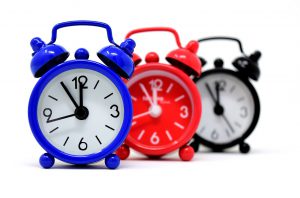SomnusNooze
 Can IH be diagnosed through a controlled 32-hour bed-rest protocol? And, if so, how many hours does someone need to sleep during those 32 hours to be diagnosed with IH? Finally, how accurate is this type of diagnosis? Sleep researchers in France recently set out to answer these questions, and discovered that the optimal time for determining whether patients had IH was 19 hours over the 32-hour period. For the first 24-hour period, the best cutoff time was 12 hours. To help our readers understand whether this extended-sleep test might be a helpful new tool for diagnosing IH, we have summarized below the researchers’ report of their findings, which is entitled “Revised Diagnostic Criteria for Idiopathic Hypersomnia: A 32-hour Bed-rest Protocol.”1
Can IH be diagnosed through a controlled 32-hour bed-rest protocol? And, if so, how many hours does someone need to sleep during those 32 hours to be diagnosed with IH? Finally, how accurate is this type of diagnosis? Sleep researchers in France recently set out to answer these questions, and discovered that the optimal time for determining whether patients had IH was 19 hours over the 32-hour period. For the first 24-hour period, the best cutoff time was 12 hours. To help our readers understand whether this extended-sleep test might be a helpful new tool for diagnosing IH, we have summarized below the researchers’ report of their findings, which is entitled “Revised Diagnostic Criteria for Idiopathic Hypersomnia: A 32-hour Bed-rest Protocol.”1
Introduction:
Currently the diagnosis of idiopathic hypersomnia (IH) is based on clinical and electrophysiological symptoms, as there are no reliable biomarkers yet discovered. This study’s aim was to assess the diagnostic value of extended sleep duration for the diagnosis of IH via a controlled 32-hour bed-rest protocol.
Materials and Methods:
The researchers studied 116 people with primary hypersomnolence (excessive daytime sleepiness) and 21 controls. Of the group with hypersomnolence, 37 were diagnosed with IH according to a stringent multiple sleep latency test (MSLT), and the remainder were classified as having non-specified hypersomnolence (NSH). All subjects completed “polysomnography and a modified-MSLT followed by a 32-h bed rest protocol to obtain the maximum spontaneous amount of sleep.” The researchers then analyzed the amounts of total sleep time (TST) to determine the best cut-off values to discriminate between those with and without IH over various time periods of the 32-hour protocol.
Results and Conclusion:
The researchers found that the optimal TST cut-off time for discriminating patients with IH from the control group was 19 hours over the 32-hour period “(sensitivity 91.9%, specificity 85.7%).” The best cut-off time for the first 24-hour period was 12 hours “(sensitivity 100%, specificity 85.7%)”. The currently accepted 11-hour cut off showed a poor specificity of 57.14%. (The most helpful tests for accurate diagnosis provide both a high sensitivity and specificity.) They also found that the 19-hour TST cut-off allowed for a better phenotypical characterization of IH and concluded “that sleepier patients on MSLT were also the more severe in terms of extended sleep.” This indicates a likely continuum between IH with and without long sleep.
Reference:
- Revised Diagnostic Criteria for Idiopathic Hypersomnia: A 32-hour Bed-rest Protocol. E. Evangelista, R. Lopez, L. Barateau, S. Chenini, A. Bosco, I. Jaussent, Y. Dauvilliers. 1Centre National de Référence Narcolepsie Hypersomnies, Unité des Troubles du Sommeil, Service de Neurologie, Hôpital Gui-de-Chauliac, France; 2Inserm U 1061, France; 3Université de Montpellier, Montpellier, France
